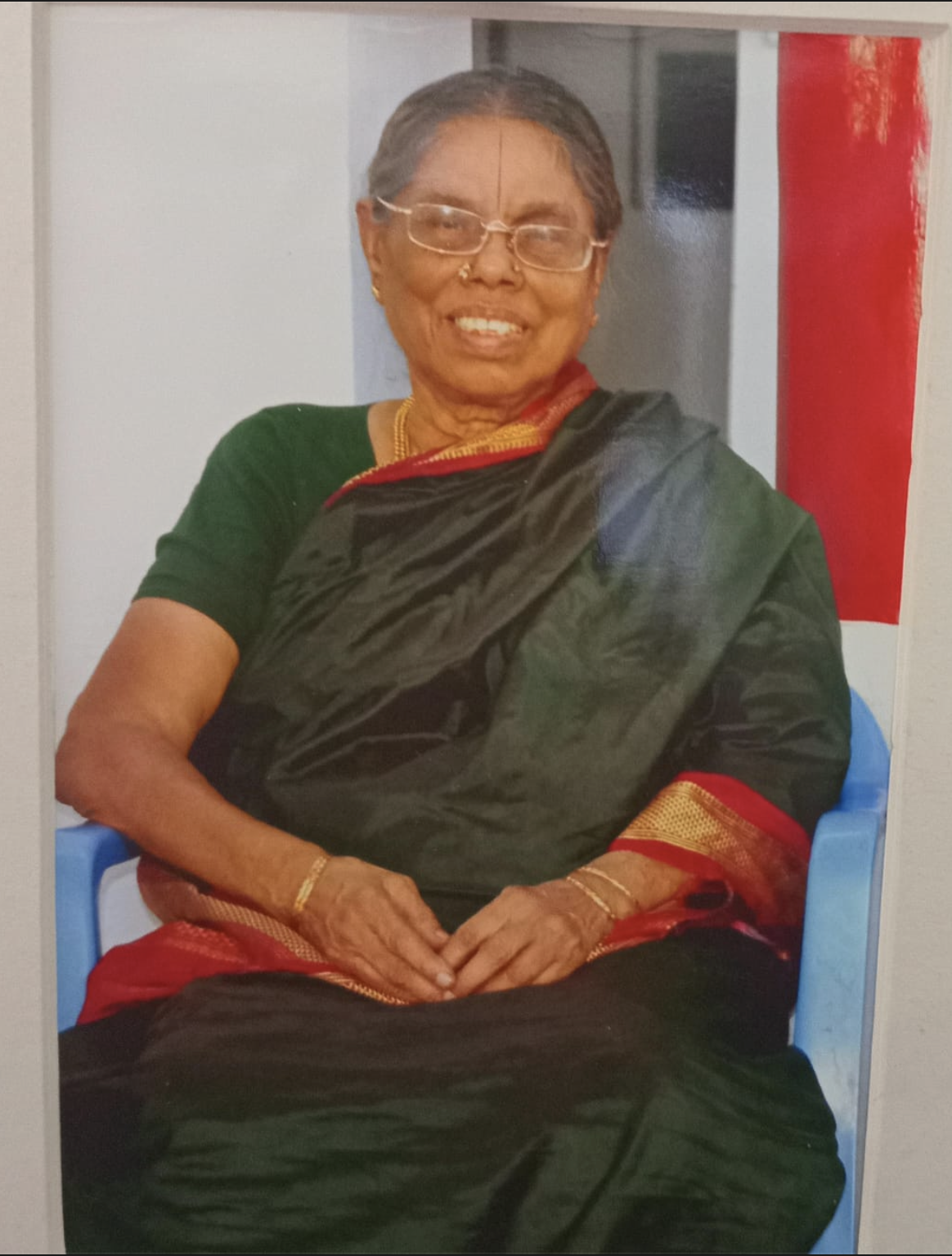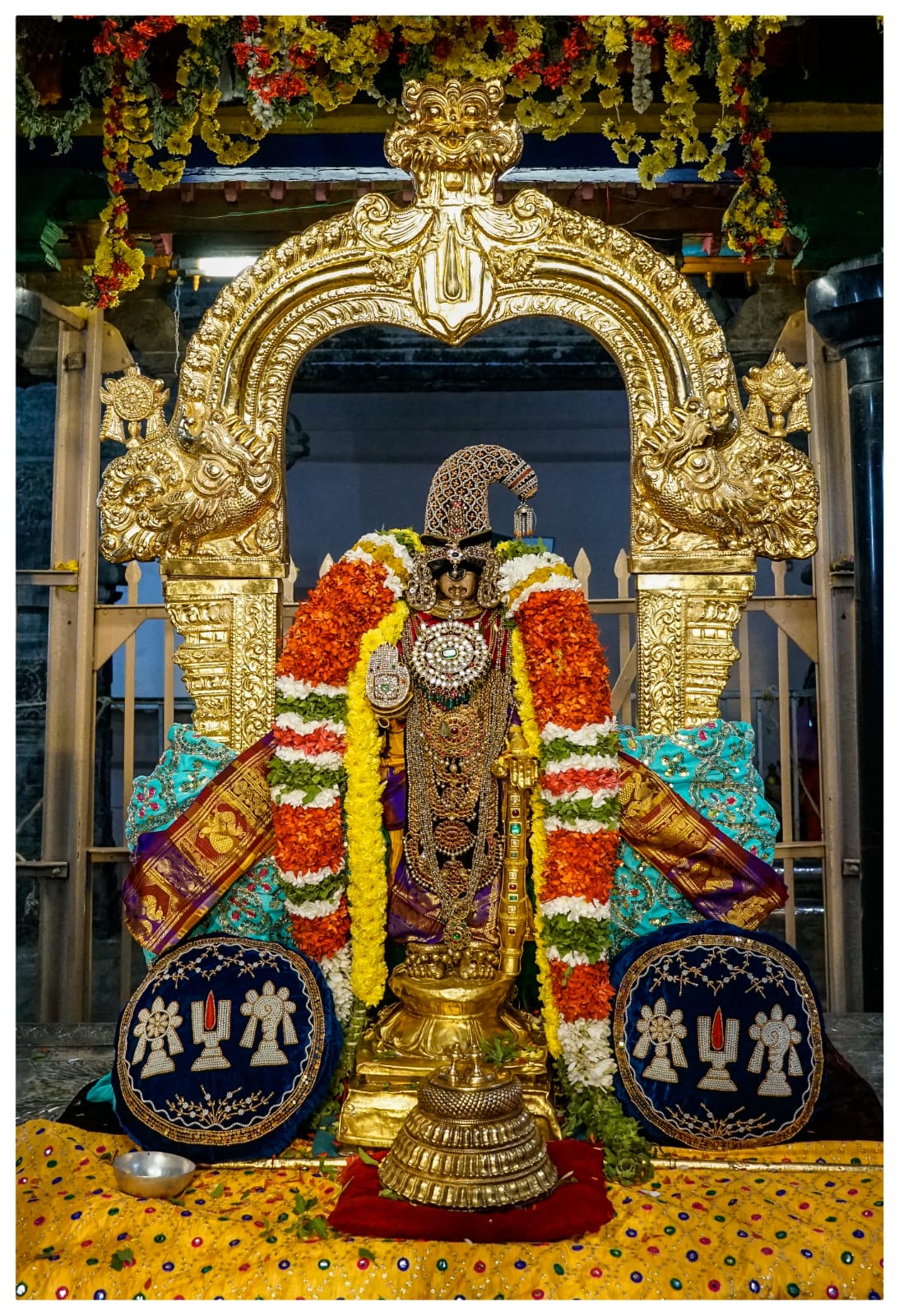A Tribute to Paati | Enakkoru nalvazhi

My paati (grandmother), Mrs. Alamelu Thirumalai, pictured above, was born this day, October 2 in 1931. She was a pious woman well versed in Tamil. She composed her own songs, and this particular composition has stayed with me since my childhood. I wanted to preserve it here — right now it exists only in the memories of my mother and other relatives.
I have added my notes below the lyrics. What emerges is a composition that works simultaneously as accessible devotional poetry and sophisticated theological meditation. Look at all the epithets she has for the good Lord - ரங்கய்யா (rangayya), பொன்னிசூழ் அரங்கனே (ponnisoozh arangane), பூமகள் நாயகனே (poomagal nayagane), அரங்கராஜனே (arangarAjane), அனந்தசயனனே (anantasayanane), அழகிய மாணவாளா (azhagiya manavalA), ஆனந்த ரூபனே (Anandharoopane)!
Paati’s “Alamelu” mudra places her squarely within the Carnatic kriti tradition, while her systematic use of scriptural references, Alwar quotations, and linguistic theology shows someone who lived so deeply within the Sri Vaishnava tradition that these connections emerged naturally through devotional expression.
Ragam: Simhendramadyamam
Talam: Adi
Rendition by my mother Rengamani Thirumalai
Pallavi:
எனக்கொரு நல்வழி காட்டும் ஐயா1
உன் கோயில் வாசல் வந்து2, பணிந்து நின்றேன் ரங்கய்யா - எனக்கொரு
enakkoru nal vazhi kAttum ayyA
un koyil vAsal vandhu, panindhu nindren rangayya - enakkoru
Show me the good path, O Lord!
I’ve come to Your temple entrance and stand bowing, Rangayya!
Anupallavi:
பொன்னிசூழ் அரங்கனே3, பூமகள் நாயகனே4
அரவணை துயில் கொள்ளும் அரங்கராஜனே
ponnisoozh arangane, poomagal nayagane
aravanai thuyil kollum arangarAjane
O Lord of Arangam surrounded by the Ponni (Cauvery), O consort of Bhumi
O King of Arangam who sleeps on the serpent bed
Charanam: 5
அன்னை ரெங்கநாயகி அர்ச்சிக்கும் மாயவனே,
ஆழ்வார்கள் துதிபாடும் அனந்தசயனனே,
அரையர்கள்6 பண் பாடும் அழகியமணவாளா,
அலமேலு7 பணிந்திடும் ஆனந்தரூபனே8
annai ranganayaki archikkum mayavane,
Azhwargal thudhi paadum anantasayanane
araiyargal pan pAdum azhagiya manavAla,
alamelu paninthidum Anandha roopane
O the mysterious Lord whom Mother Renganayaki worships,
O Anantasayana extolled by the Alwars
O Azhagiya Manavala to whom the Araiyars sing the Divya Prabandham,
O blissful form to whom Alamelu bows
Notes
-
The opening “எனக்கொரு நல்வழி காட்டும் ஐயா” reminds me of Arjuna’s moment in the Gita:
कार्पण्यदोषोपहतस्वभावः पृच्छामि त्वां धर्मसम्मूढचेताः
यच्छ्रेयः स्यान्निश्चितं ब्रूहि तन्मे शिष्यस्तेऽहं शाधि मां त्वां प्रपन्नम् (BG 2.7)
“I’m overwhelmed by weakness and confused about dharma. Please tell me decisively what’s best - I’m your disciple, guide me.” Same energy of total surrender when you’re lost. ↩ -
“உன் கோயில் வாசல் வந்து பணிந்து நின்றோம்” situates us at Srirangam itself. Which entrance/vaasal is paati talking about? Srirangam has three main entrances, and if she lived near Therku Chithirai Veedhi like I suspect, maybe she had a specific one in mind - the Ranga Ranga gopuram as locals call it, or the more archaic ‘Naanmugan Thiruvasal’ ↩
-
“பொன்னிசூழ் அரங்கனே” establishes Srirangam’s sacred geography - the Lord surrounded by Ponni, the Kaveri, very close to Thirumazhisai Azhwar’s “பொன்னிசூழ ரங்கமேய பூவைவண்ணமாயகேள்” from Thiruchandhavirutham (119). ↩
-
“பூமகள் நாயகனே” is intriguing because who it refers to depends on pronunciation. If “பூமகள்” (poomagal), it refers to Sridevi, the divine consort. But if pronounced “பூமகள்” (boomagal), it’s Bhuma Devi - the all-patient Earth goddess. Nammazhwar’s “மாதர் மா மண்மடந்தை” (Thiruvaimozhi 4.2.6) celebrates her as the one who tolerates and sustains all - the epitome of patient endurance. A trait that was predominant in my grandmother too. ↩
-
Here’s where it gets interesting. Look at the charanam - every half-phrase starts with ‘A’: “annai, archikkum, AzhwArgal, anantasayanane, araiyargal, azhagiya, alamelu,Anandha.” That’s eight ‘A’ sounds opening each line. Reminds me of Parasara Bhattar’s Ashtasloki which starts with this line:
अकारार्थो विष्णुः जगदुदय रक्षा प्रलय कृत्
“The letter ‘a’ stands for Vishnu, creator-protector-destroyer of the universe.” ↩ -
The Araiyars are the hereditary temple musicians of Sri Rangam. These families have been carrying the Divya Prabandham tradition at Srirangam for over a thousand years. ↩
-
“Alamelu” is her mudra. Now, Alamelumanga is the consort of Srinivasa of Thiruvengadam (Tirupati), not Srirangam’s, so why invoke her? Here’s the thing - Thirumangai Azhwar’s “வெருவாதாள் வாய்வெருவி வேங்கடமே வேங்கடமே எங்கின்றாளால்” shows how even when singing about Srirangam, the heart can yearn for Venkatam in nayika bhavam. Similarly, paati sees Alamelumanga in Sri Ranganachiyar - the same divine principle appearing in different places. ↩
-
“ஆனந்த ரூபனே” echoes Adi Shankaracharya’s Ranganathashtakam, which opens with “ānandha rūpe.”
 ↩
↩